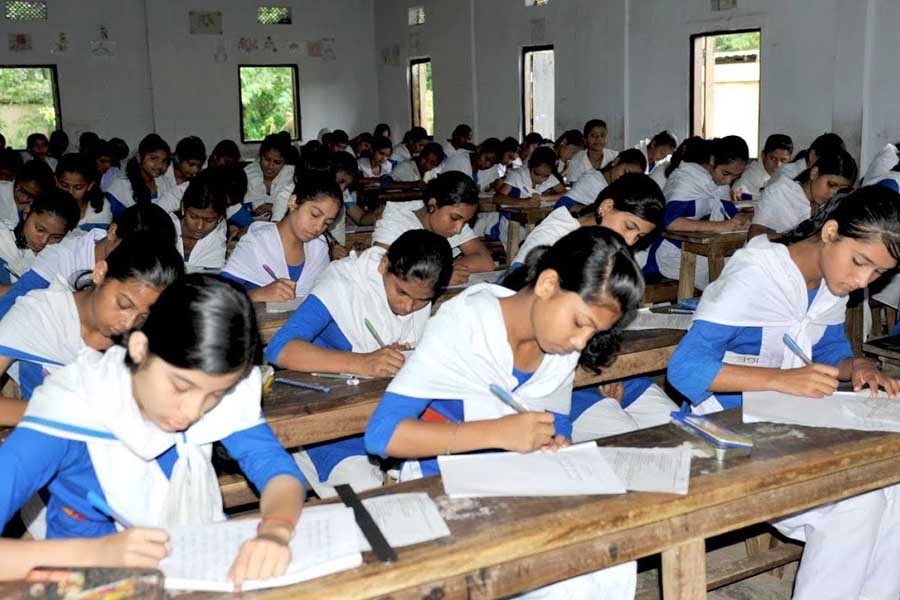
Published :
Updated :

One year after the Banbeis (Bangladesh Bureau of Educational Information and Statistics) disclosure that dropout rate among the secondary school girls in 2017 was hovering around 42 per cent, a survey on the male students at the same level for 2018 offers a nearly similar picture. According to Banbeis, the dropout rate at the post-primary secondary level among boys stood at 36 per cent in 2018. Owing to the rate being lower than girls, experts view it to be near-impressive. It's because seven years ago, in 2011, around 47 per cent of secondary school boys dropped out before finishing their secondary school studies. The percentage fell to 34.9 in 2012 before oscillating between 33 and 34 per cent until 2017. Finally it reached 36.01 per cent as revealed by a Banbeis draft report. It's titled 'Bangladesh Education Statistics 2018'. According to the report, in the last year, too, dropout rate of the secondary-level girl students was higher than that of the boys --- the rate being 40.19 per cent.
Notwithstanding the fact that the countrywide overall secondary-level dropout rate has been on the decline since 2008, when it was at 61.38 per cent, it plummeted to 37.62 per cent last year from 37.81 in 2017. It, undoubtedly, signals a ray of hope. But the general scenario being less upbeat than envisioned by the education authorities and academics, troubling thoughts threaten to taint many a state-sponsored venture. Dropping out of school at the secondary level is veritably bidding adieu to education just a few steps away from the entrance to higher secondary and higher education. As has been seen in the past, the scenario is more widespread in the rural communities than in the urban areas. Given this fact, the trend of leaving school by adolescent boys and girls at this critical phase pops up as a riddle. But in fact, in view of the rural socio-economic realities, the propensity stems from hard realities.
Cutting down on poverty and helping raise the family income stand out as two reasons behind students' dropping out at the secondary stage. The students' as well as the parents' desperation at times reach such a point that they become oblivious to the benefits of performing better at the SSC exams. Better results in Secondary School Certificate (SSC) exams pave the way for coming out on the broader avenues of life. This time-tested truth is often consigned to the backburner thanks to students being enervated by the hard realities of life. Boy and girl-students leaving school while in Class 6 or 7 are a common phenomenon in rural high schools.
With textbooks annually distributed for free, stipends for brilliant students and many other curricular incentives, school education in Bangladesh has come a long way from its dreary past. Teachers are well-paid, school and classroom infrastructure have largely worn an education-friendly look. These changes have undoubtedly contributed to the growth of the potential for keeping their students in classrooms, like seen at the primary schools. Social experts point finger at poverty for secondary students dropping out of school. In the case of girl-students, early marriage and social taboos stand in the way of their advancing academically. Like the adolescent boys, they, too, begin being valued as hands adding to the families' workforce at a critical age. A nation can't progress much leaving its future women half-literate.


 For all latest news, follow The Financial Express Google News channel.
For all latest news, follow The Financial Express Google News channel.